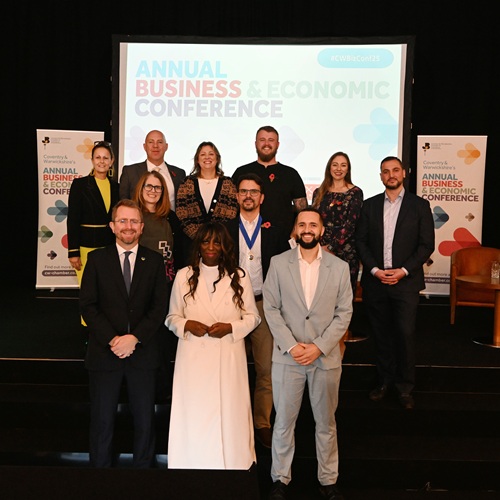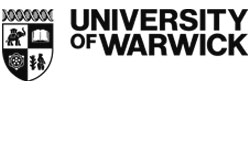At Coventry and Warwickshire Chamber of Commerce, we understand the significance of making small changes to create a greater impact on our future.
Our Sustainable Business Series campaign aims to share best practices, guidance, and knowledge to enhance business know-how and achieve net-zero emissions in four key areas: Energy, Transport, Circular Economy (Waste & Resources), and Sustainable Business Management.
Why is Business Progress to Net Zero Important?
On a global scale and throughout Coventry and Warwickshire, the increased emission of greenhouse gases (GHG) is causing the average temperatures to rise, leading to extreme weather conditions and putting a strain on natural resources. This is costing economies billions of dollars.
Carbon dioxide is the most prevalent greenhouse gas, which traps heat and is mainly caused by human activities. In our region, GHG and air pollution cost around £2.5 billion annually, posing risks to public health and investment for the region.
This business imperative has led to increased environmental concerns, consumer and supplier pressure, and environmental contract stipulations for businesses to achieve net-zero emissions, which means they need to adapt.
Video: Learnings from the D2N2 Hydrogen Roadmap for business sustainability, Arup. See here.
Video: What does Net Zero mean for SME's? See here.
Video: Adelan Ltd. See here.
Video: Progressing to a Net Zero Business through Transport. See here.
Video: Fuel Cells and their Business Applications - Adelan. See here.
Video: Sol Col product sustainability. See here.
Video: Key steps for achieving Net Zero - Utility Team. See here.
Video: Progressing to a Net Zero business through the Circular Economy. See here.
Video: Progressing to a Net Zero business through Sustainable Business Management. See here.
Video: Very light rail project, Coventry - WSP. See here.
Video: Steps to reduce your travel emissions - Mott MacDonald. See here.
Video: Sustainable Design Principles - Gensler. See here.
Video: Carbon Reduction Strategy - Actions to support achievement - Morgan Sindall. See here.
Video: Seven Carbon Saving Tips - Aston University. See here.
Video: COP 26 Debrief: What do the outcomes mean for business? See here.
Video: Integrating sustainability for tenders and supply chain assessments - Kindred CSR. See here.
Video: The EcoPledge initiative - Sutton Coldfield Chamber. See here.
Video: Calls for leaders to take action on climate change - King Edwards Sustainability Society. See here.
Video: Progressing to a Net Zero Business through energy. See here.
Sustainable Business Video: Sustainable Business Series: Progressing to a Net Zero Business through Energy. See here.
Maximising Energy Reductions for High Energy Users
Inspired Energy | James Sampson

This blog post has been produced for the Greater Birmingham and Coventry and Warwickshire Chambers of Commerce as part of the 2021 Sustainable Business Series: Net Zero campaign.
The Sustainable Business Series: Net Zero is the Chamber’s first campaign on environmental sustainability, which aims to share best practice, guidance and knowledge to increase business progress to net zero. In 2021, this involves 5 free online webinars taking place from the end of September and throughout October along with publishing thought leadership podcasts, videos and blog content. The campaign will feature a Sustainability Summit on 3rd November
Thanks to our Headline Sponsors – Aston University, Arup, Morgan Sindall and the University of Birmingham - all webinars and the Summit are free to attend.
For energy intensive users who are looking to maximise energy reductions and costs, measuring your existing carbon footprint, and setting a clear, Science Based Target (SBT) is the first step to your decarbonisation journey.
To measure your carbon footprint and help you understand where your business is at, you will firstly need to:
Collect all utilities consumption data
Scope 1 - Direct emissions from owned or controlled sources
Scope 2 – Indirect emissions from the generation of purchased electricity, steam, heat, and cooling
Scope 3 – Further indirect emissions created by your value chain, such as purchased goods, services, business travel, water usage and waste disposal
This data driven approach to reducing your carbon emissions will allow you to make better informed decisions when it comes to planning the steps towards your SBT. It’s important that whilst striving for Net Zero, your SBT is achievable and realistic but can also be measured against the criteria set within the Paris Agreement.
Actionable insights
The insights gained from the data you collect about your carbon emissions will help you prioritise areas of improvement. How long your business has been focusing on decarbonisation, will determine how much work you still have to do to work towards your SBT.
Wherever your business is creating the most emissions is where you should begin with your prioritisation. Most businesses are now finding that their Scope 3 emissions now represent around 90% of their total Greenhouse Gas (GHG) emissions.
Practical steps to maximising your reductions
Reviewing your businesses options is the first step when it comes to actioning a reduction plan. Knowing the available options as well as what is practical both now and in the future is vital. From educating employees on adopting energy efficient behaviours to installing a waste heat recovery system, the solutions are almost endless.
Your budget is also a crucial factor, as some solutions such as switching to a renewable energy supply, on-site generation or electric vehicle (EV) charging require initial capital investment. Therefore, it’s important to plan how these will be funded as well as the timing on the Return on Investment (ROI). This type of energy reduction strategy will also need to be led by Board-level stakeholders.
Working with an expert utility consultant like Inspired Energy provides you access to decades of industry knowledge and experience, which you can rely on to ensure your business is working towards your Net Zero carbon goals. A utility consultancy can also support your business with implementing its carbon reduction plans and advise on any grants or schemes such as the Energy Savings Opportunity Scheme (ESOS) your business can take advantage of to ease the financial burden.
Speak to Inspired today about your energy reduction requirements on 01772 689250 or email James at [email protected].
NFU Energy - What's the best renewable technology for your business | John Swain

This blog post has been produced for the Greater Birmingham and Coventry and Warwickshire Chambers of Commerce as part of the 2021 Sustainable Business Series: Net Zero campaign.
The Sustainable Business Series: Net Zero is the Chamber’s first campaign on environmental sustainability, which aims to share best practice, guidance and knowledge to increase business progress to net zero. In 2021, this involves 5 free online webinars taking place from the end of September and throughout October along with publishing thought leadership podcasts, videos and blog content. The campaign will feature a Sustainability Summit on 3rd November
Thanks to our Headline Sponsors – Aston University, Arup, Morgan Sindall and the University of Birmingham - all webinars and the Summit are free to attend. Interested parties can find out more and register to attend Sustainable Business Series: Net Zero events here, and the Sustainable Business Summit here.
Renewable Energy Solutions
Each year Government comes up with new business obligations and incentivisation schemes to encourage us to go green. They target big energy users at the moment, but this could be about to change.
As more installers and manufacturers make the switch, the cost of setting up renewable energy systems at your workplace and home is getting cheaper. And in parallel to that is the sobering fact that energy prices have risen by 212% in the last 12 months and are continuing to climb.
UK emissions targets
To ensure Great Britain hits its carbon emissions reduction targets, large companies of 250 employees or more or with a turnover in excess of +44.1 million are required by law to participate in the Energy Saving Opportunity Scheme (ESOS) and/or Streamlined Energy Carbon Reporting (SECR). These assessments monitor energy usage to set out energy saving strategies that the businesses must comply with or risk getting fined, and they must be undertaken every 4 years.
NFU Energy helps companies of this size to comply with these obligations, but for SMEs - the Auditing work we carry out (with adjusted costs) can be just as valuable a cost saving measure for your business too. They present you with a baseline for smaller improvements but also help you to look ahead in planning your long-term energy use strategy. It is also worth noting that government is currently considering whether it should widen the participation of the ESOS to include medium sized businesses too.
What is a carbon footprint?
A carbon footprint is a way of accounting for the greenhouse gas emissions of a business, a product or a service through its entire lifecycle. Although we call it a carbon footprint, it also includes the other greenhouse gases of methane (CH4) and nitrous oxide (N2O), that are then presented as a carbon equivalent according to their Global Warming Potential. We collect your energy-use data, carry out a full onsite walk-through and then provide you with a high-level overview of potential efficiency and cost saving improvements. Additionally, recommendations are made where upgrades or changes could be beneficial and financially worthwhile.
What are Renewable Energy Solutions?
Despite an ever-growing share of the UK’s power coming from renewables, we’re still far too dependent on gas to heat our homes and generate electricity – the majority of which is imported.
We are set-up to install renewable systems where the majority of energy will be consumed on-site. However, we can also help assess and develop much larger schemes where exporting power to the grid is the primary objective too.
The service begins with a conversation to check if renewable technology is appropriate for your site. Then a full feasibility study with clear cost savings and timescales is carried out before you make any commitments.
Renewable technologies
Benefits of solar PV
Solar Photovoltaic panels (often referred to as Solar PV or PV) capture the sun’s energy and convert it to electrical power. Solar panels do not need direct sunlight to work, they can still generate some electricity on a cloudy day.
How does wind energy work?
Over the last few decades a growing wind power sector has begun to make use of the UK’s geography and take advantage of the fact that we are one of the windiest countries in Europe.
British landowners have been harnessing the wind’s energy for centuries. However, generating electricity has only been developed more recently, with the first commercial wind farm built in 1991 in Cornwall.
What is a heat pump?
A heat pump is a device that takes low temperature (low grade heat) and upgrades it to higher temperature (high grade heat). They work essentially by acting like a fridge or freezer but in reverse. With a fridge the inside is cold and the outside is warm, we want the inside of the building to be warm and the outside to be cold. Most heat pumps use a refrigerant which is pumped around a system of pipework from a heat source (air, water, or ground), to the area where heat is required. The low grade heat which is captured, is boosted by a compressor into a higher grade usable heat.
What is anaerobic digestion?
Anaerobic digestion is the process in which organic materials such as food or animal waste are broken down by microorganisms, in an anaerobic (oxygen free) environment – the digestor. This process produces biogas for combustion in a Combined Heat and Power (CHP) unit or boiler, or can be enriched with propane to produce biomethane (green gas), which can then be fed back into the gas grid with a payment attached to it. The government has laid out plans for the new Green Gas Support Scheme (GGSS) and although final details have not yet been announced, it is likely green gas producers will be paid for injecting gas into the gas grid.
For the full guides on these renewables visit our website www.nfuenergy.co.uk
Find out more
If you are interested in finding out more about how NFU Energy can help you install renewable energy systems please contact us on [email protected] or 024 7669 6512.
NB NFU Energy earns commission on successfully installed Renewable Energy Solutions based projects, but this is paid by our installer and finance partners and is not added onto the price you pay.
Northern Gas & Power
SBS21: Food for Thought: Make Life Sustainable
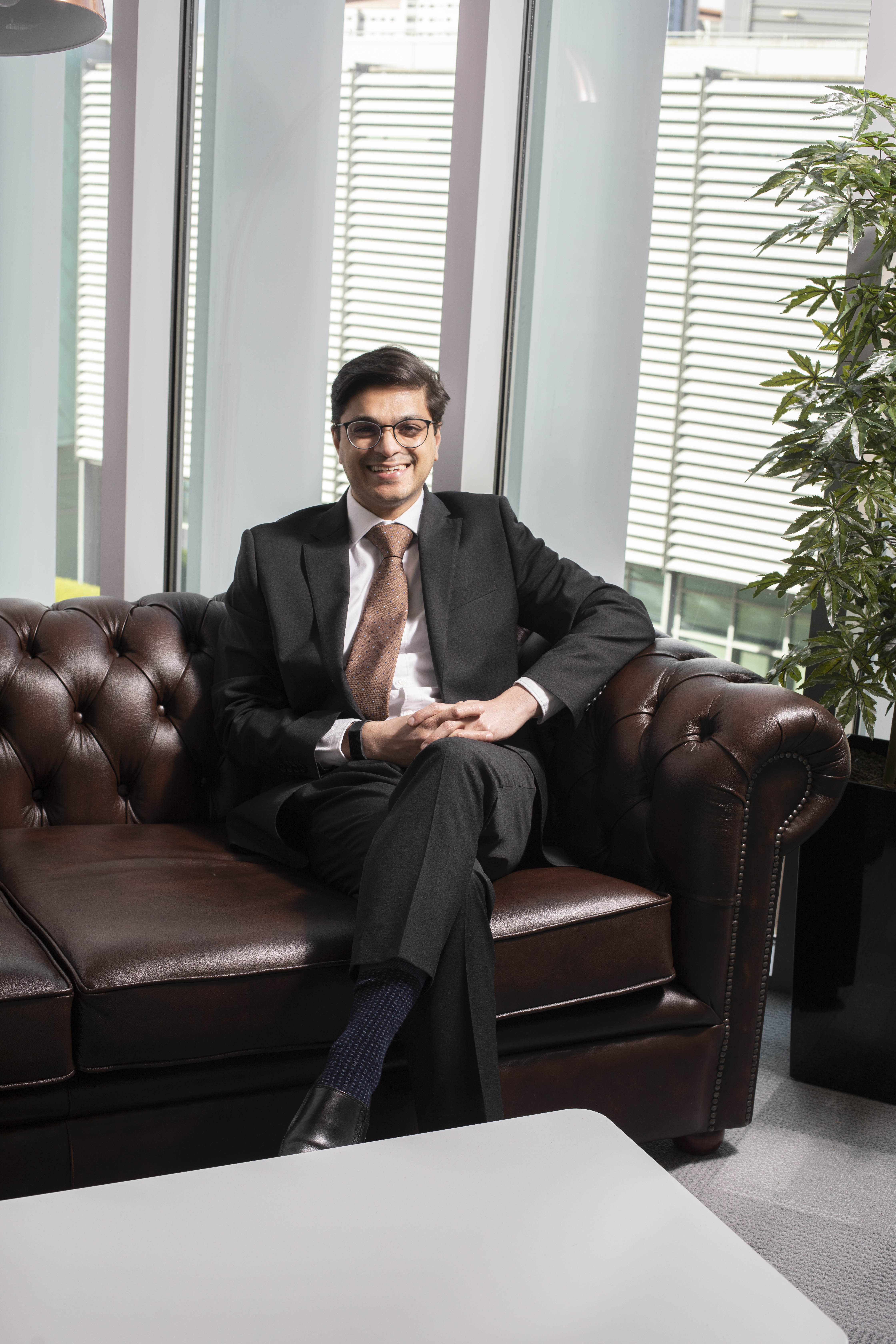
This blog post has been produced for the Greater Birmingham and Coventry and Warwickshire Chambers of Commerce as part of the 2021 Sustainable Business Series: Net Zero campaign.
The Sustainable Business Series: Net Zero is the Chamber’s first campaign on environmental sustainability, which aims to share best practice, guidance and knowledge to increase business progress to net zero. In 2021, this involves 5 free online webinars taking place from the end of September and throughout October along with publishing thought leadership podcasts, videos and blog content. The campaign will feature a Sustainability Summit on 3rd November
Thanks to our Headline Sponsors – Aston University, Arup, Morgan Sindall and the University of Birmingham - all webinars and the Summit are free to attend. Interested parties can find out more and register to attend Sustainable Business Series: Net Zero events here, and the Sustainable Business Summit here.
Food and beverage demand is expected to grow significantly in the coming years.
Manufacturers are under intense pressure to meet ever-growing demand from regulators and consumers – and – will need to nourish a global population that is projected to rise from 7.8 billion in 2020 to 9.7 billion in 2050. With this demand comes a heavy dependence on fossil fuels. Effective energy management is now a business necessity, and all eyes are on industry to address its responsibility for the depletion of fossil fuels and the emission of carbon dioxide in food and beverage plants. The pressure on food and beverage companies to maximise resources has never been greater.
Greener and More Sustainable
Shareholders and stakeholders in the supply chain, such as the supermarkets, are putting pressure on food and drink factories to become greener and more sustainable.
The reality is, it is a win-win for all parties. Reducing waste and increasing efficiency helps to lower the bottom line for businesses. In increasing efficiency, companies also boost their environmental credentials. If the food and beverage sector looks at this as an opportunity to increase its value, it can see it is also ideal for people, planet and profit.
Developing energy efficiency strategies is crucial. Energy efficiency initiatives enable industries such as food and beverage to reduce consumption and improve operational output, allowing for a better client experience.
Energy Efficiency
These companies have the opportunity to lead the way in driving energy efficiency. Companies first need to measure where their energy is used. Once you have visibility of what the causes are for energy consumption, whether it is a specific process or a piece of machinery, it is easier to identify what efficiencies can be made for that particular consumption.
Reducing Costs
By way of further example, if 60 per cent of total gas consumption is accredited to one boiler, it makes sense to focus on how that can be made more efficient, either a new, more efficient boiler, a combined heat or power unit, or an alternative to natural gas, such as food waste or the development of hydrogen to truly cut emissions. This also has the added bonus of reducing costs.
Green Credentials
Renewable sources energy conservation is vital for the sustainable development of the food and beverage industry.
Savings could be as little as a few per cent, to over 40 per cent in savings in year one. Such is the plethora of technologies available. Variable speed drives for motors typically have a sub one year payback. However solar PV typically has a payback of around eight years.
Each site is unique, therefore there is no one size fits all solution, neither is there one financing of these solutions.
The food and beverage processing industry has the potential to integrate the use of renewable energy sources to reduce pollution and waste generation, and so reduce overall costs.
Renewable Energy
Producing energy on-site is the best means to reduce costs. Renewable energy such as solar on the roof or the car park is the ideal way to utilise those spaces. Vertical wind turbines are also commercially viable, but produce little energy.
Anaerobic digestion plants are a viable source for power and gas supplies but require a large amount of organic waste to fuel them. Hydrogen production is the next generation that will replace gas fired CHPs, however this market is very much embryonic.
Geothermal power from an abandoned coal mine is the most robust way to extract heat for the long term, however such projects are incredibly costly and take time to develop, but will last more than 50 years.
Greater Profit
It’s clear that thinking of energy as a business-as-usual operating cost is no longer acceptable. An accessible path to greater profit is balancing profitability and sustainability and transforming challenges into opportunities.
The constant quest to decrease costs and increase tight margins, whilst serving a growing population and meeting increasing demands from consumers and regulators, is weighing on the food and beverage industry. The technology to cut energy costs, reduce energy consumption, boost operational performance, and extend equipment longevity exists. It’s just a question of whether or not companies choose to leverage it to improve the sustainability of food production.
SBS21: Achieving Net Zero for Building Managers with Minimal Intervention – GridEdge
Tom Anderson, Co-Founder of Grid Edge

This blog post has been produced for the Greater Birmingham and Coventry and Warwickshire Chambers of Commerce as part of the 2021 Sustainable Business Series: Net Zero campaign.
The Sustainable Business Series: Net Zero is the Chamber’s first campaign on environmental sustainability, which aims to share best practice, guidance and knowledge to increase business progress to net zero. In 2021, this involves 5 free online webinars taking place from the end of September and throughout October along with publishing thought leadership podcasts, videos and blog content. The campaign will feature a Sustainability Summit on 3rd November
Thanks to our Headline Sponsors – Aston University, Arup, Morgan Sindall and the University of Birmingham - all webinars and the Summit are free to attend. Interested parties can find out more and register to attend Sustainable Business Series: Net Zero events here, and the Sustainable Business Summit here.
The World Green Building Council’s Net Zero Carbon Buildings Commitment, calls for business, organisations, cities, states and regions to reach net zero carbon in operation for all assets under their direct control by 2030, and to advocate for all buildings to be net zero carbon in operation by 2050.
By drastically reducing operational carbon from buildings, the Commitment is designed to maximise the chances of limiting global warming to below 2 degrees, and ideally below 1.5 degrees. Since its launch, the businesses and organisations signed up to the Commitment now cover nearly 6,000 assets, over 32 million m2 of total floor area and $100 billion in annual turnover. This will add up to a saving of approximately 3.4 million tonnes of CO2 (tCO2e) in 2030 alone.
Net zero operational carbon by 2030 is an ambitious target, but it’s not unachievable, and while the Commitment isn’t compulsory, building owners do need to bear in mind that government goals – and inevitable legislation – means that operational carbon is not something that can be ignored. Governance aside, there are multiple benefits to be had in reducing building emissions. Lower costs is obviously a major draw, as is greater resilience in the face of resource scarcity concerns – something that’s been highlighted recently by both the pandemic and Brexit.
However, for building managers in charge of existing buildings, where improved energy efficiency depends on retrofitting, the task can seem daunting, not least because of concerns regarding expense at a time when everyone is feeling the economic squeeze. But there are straightforward measures that can be taken that are low cost and require minimal intervention which will see significant carbon savings. Starting with these will get your building firmly on track for net zero.
Lighting
In terms of quick wins, making a few simple tweaks to your building’s lighting can deliver significant returns.
Fit daylight and/or occupancy sensors to lights. Dimming or switching off lighting when there’s no-one in the room can reduce electricity use by 30%.
Transition to LED lighting. LED lights consume 70-90% less energy than a standard incandescent or CFL bulb. Depending on your building, this is something that can be done gradually, without the need for major interference.
Draughts and insulation
Proper insulation is a must for any building to be deemed adequately energy efficient, and it’s something that all building managers should have on their agenda. It can be a big undertaking, though, so in the meantime ensure you at least have these low-cost, low-intervention measures in place.
Openable windows in decent condition can be draught-stripped to reduce heat loss. If a one pence coin can slide between a window and its frame, draught-proofing will be cost effective and improve comfort.
Insulate boilers and pipework properly – an uninsulated valve can leak as much heat as a metre of pipework.
Keep doors closed between heated and unheated areas. Automatic closers are a relatively inexpensive measure that can be installed without fuss.
Heating and ventilation
Ensuring heating, ventilation and air-conditioning processes are running as efficiently as possible can be a challenge for building managers, as these systems are often controlled by building occupants and governed by their comfort levels. However, unlike other components in a ventilation system, air filters are designed to be changed, so choose energy efficient ones. Such filters can be called ‘energy efficient’ because they last longer and are designed for lower average lifetime resistance, which means HVAC units don’t have to work so hard to pull air through the system. You could save up to one tonne of CO2 for each upgrade.
Smart technology
The measures described above focus on hardware changes, but much of a building’s operational carbon output is driven by external factors, such as people and how they use the space. This is almost impossible for a building manager to control, which is where smart technology comes in.
Grid Edge’s Edge2X product, for example, brings together a building’s complete metering, sensor and environmental data, and uses intelligent algorithms to detect inefficient energy performance. A wide range of factors, such as weather and building occupancy, are taken into account to help automate savings and efficiencies, and everything is presented in a smart, easy-to-understand digital platform.
There’s minimal intervention involved, as the platform works in harmony with a range of building management systems, and it can be up and running in just 48 hours. Plus, there re zero upfront costs – Edge2X is provided as software-as-a-service (SaaS) for a fixed monthly fee. The carbon savings can be significant – real estate investment company Hammerson, for example, has reduced energy use by 20% using Edge2X.
Building managers looking to reduce their operational carbon – by 2030 or otherwise – have a wide range of options to consider. Some of the quickest wins, as explored above, come from making simple hardware tweaks. Indeed, all building managers should endeavour to ensure their hardware is as efficient as possible. But smart technology adds an extra layer of efficiency by making sure that hardware is operating as efficiently as possible in harmony with the whole building, and by giving managers clear and actionable data on their operational carbon production. After all, you can’t begin to reduce something unless you know what you’re starting with.
Business must plan carefully to avoid the impacts of future disruption in the supply of Technology Metals & Critical Materials –
Dr Gavin Harper, Research Fellow, Faraday Institution, University of Birmingham
This blog post has been produced for the Greater Birmingham and Coventry and Warwickshire Chambers of Commerce as part of the 2021 Sustainable Business Series: Net Zero campaign.
The Sustainable Business Series: Net Zero is the Chamber’s first campaign on environmental sustainability, which aims to share best practice, guidance and knowledge to increase business progress to net zero. In 2021, this involves 5 free online webinars taking place from the end of September and throughout October along with publishing thought leadership podcasts, videos and blog content. The campaign will feature a Sustainability Summit on 3rd November
Thanks to our Headline Sponsors – Aston University, Arup, Morgan Sindall and the University of Birmingham - all webinars and the Summit are free to attend. Interested parties can find out more and register to attend Sustainable Business Series: Net Zero events here, and the Sustainable Business Summit here.
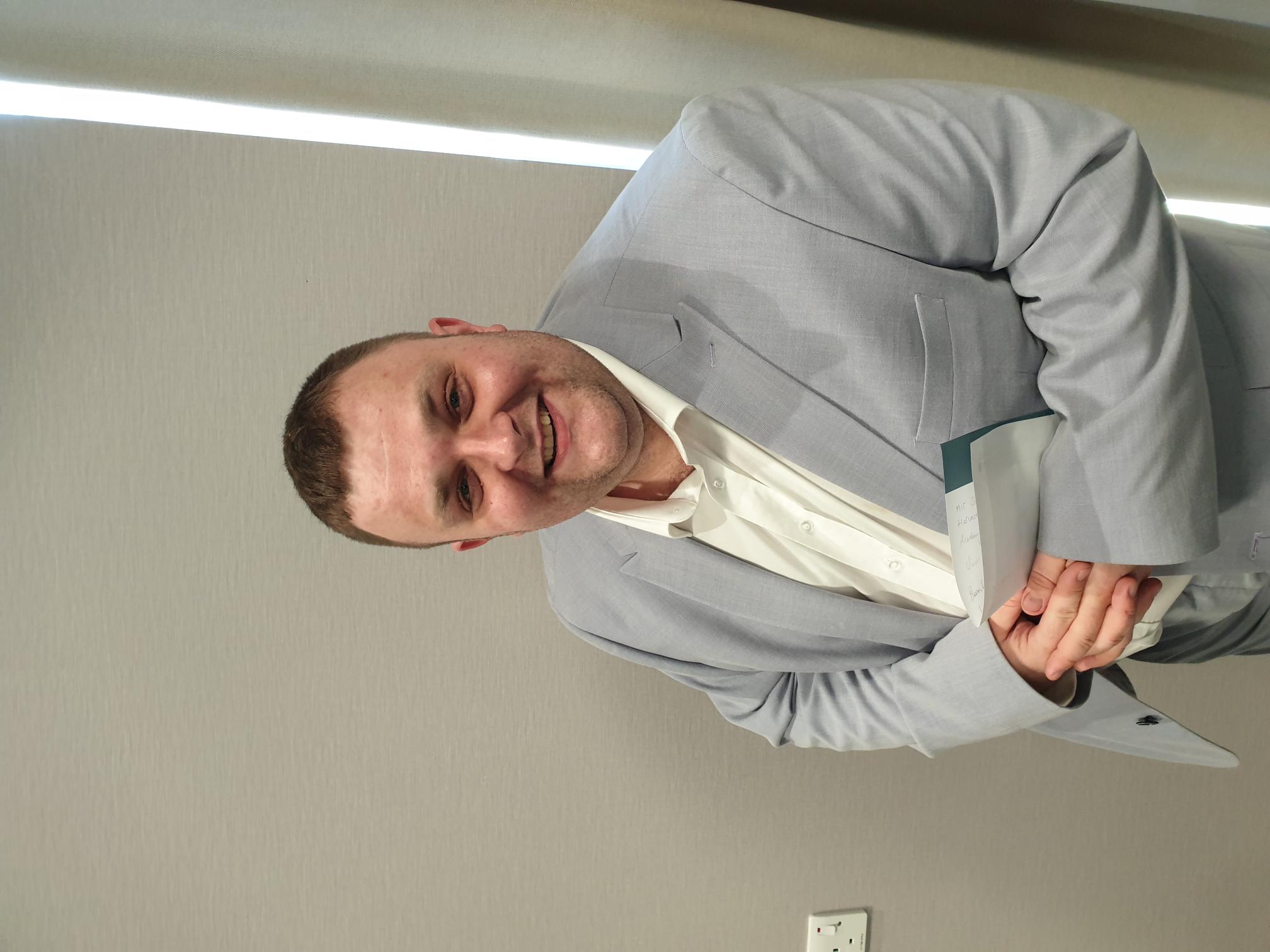
In the past couple of years, we have witnessed all manner of unprecedented challenges to supply chains, that have tested the resilience of firms, big and small across the nation. The timing could not have been worse: There has been a perfect storm at the confluence of the many unprecedented challenges that have resulted from the Coronavirus pandemic - just at the moment that firms were trying to adapt to the many supply chain challenges that were anticipated in the wake of the Brexit referendum.
The frustrations have been compounded as they have been combined with labour market and logistics challenges that have posed wicked problems for firms across diverse sectors from agriculture to the automotive industry.
The effects of this disruption have been inescapable for most businesses. Whether it be the shortage of construction materials, microchips or beer the challenges are widespread and manifold.
These interlinked crises have highlighted the importance of supply chain availability to businesses in every sector. Some challenges are beyond our control, but others can be managed through planning and policy.
Whilst firms are preoccupied with the immediate challenges of the here-and-now, the interruption to the status quo has given managers compelling reasons to carefully consider future challenges that could similarly disrupt their endeavours.
Climate change and the need to curb greenhouse gas emissions is high on the political agenda. With COP26 fast approaching, combined with a summer of the impacts are being felt, and the need for solutions is pressing.
Many of the technologies that will enable decarbonisation are reliant on technology critical metals. To give an example: Rare earth magnets are used in efficient motors and generators. These can be found in applications as diverse as off-shore wind turbines, electric vehicles, efficient pumps and power tools. Lithium-ion batteries are another technology that is similarly ubiquitous and find their way into technology products used in every sphere of business.
It is anticipated that given the enormous global demand, and constraints on supply because of bottlenecks in supply chain development, there could be future challenges with technology critical metals and critical materials availability.
At the University of Birmingham, we foresaw that UK policy around Technology Critical Metals would need to evolve rapidly post-Brexit. Hitherto, our critical materials policy had been considered as part of the larger EU-bloc, however, on leaving the EU, with the inevitable changes to policy, trading relationships and legislation, it was essential that the UK had leadership in this area. This is essential in order to retain access to the materials that will be key to our future competitive advantage as globally there is a scramble to secure access to these materials.
At the University of Birmingham, we set up the Birmingham Centre for Strategic Elements & Critical Materials to address some of these challenges, and the Centre has recently delivered a policy commission, chaired by Sir John Beddington “Securing Technology Critical Metals for Britain”.
What are the take-home messages for managers and businesses?
To mitigate the impact of materials criticality on businesses, the following approaches may be helpful:
Reduction: Reducing the need for Critical materials and Technology Critical Metals by redesigning products, businesses and services. There are business model approaches like “dematerialisation” and “product service systems” that can reduce the need for as many physical goods to achieve the same service objective.
Substitution: Substituting critical materials in products for other technologies that employ non critical materials (however, there may be a performance trade off).
Reuse and Recycling: Finding innovative ways to reuse and repurpose existing technologies that contain critical materials and recycling them at the end of their lives. [For example Lithium Ion Batteries] Designing products that use secondary recycled materials may help mitigate against
Business must also anticipate that as this issue is currently being actively considered by policy makers, future regulation in this area may also impact businesses.
SBS21: PLASTIC PACKAGING TAX: HOW WILL IT BE RECEIVED BY BUSINESSES AND CONSUMERS?
This blog post has been produced for the Greater Birmingham and Coventry and Warwickshire Chambers of Commerce as part of the 2021 Sustainable Business Series: Net Zero campaign.
The Sustainable Business Series: Net Zero is the Chamber’s first campaign on environmental sustainability, which aims to share best practice, guidance and knowledge to increase business progress to net zero. In 2021, this involves 5 free online webinars taking place from the end of September and throughout October along with publishing thought leadership podcasts, videos and blog content. The campaign will feature a Sustainability Summit on 3rd November
Thanks to our Headline Sponsors – Aston University, Arup, Morgan Sindall and the University of Birmingham - all webinars and the Summit are free to attend. Interested parties can find out more and register to attend Sustainable Business Series: Net Zero events here, and the Sustainable Business Summit here.
Anita Lloyd and Oliver Bristow, Squire Patton Bogg
The plastic packaging tax (“the tax”) will take effect on 1 April 2022, with UK businesses which produce or import plastic packaging components (“PPC”) in quantities of 10 or more tonnes per year affected.
It is likely to receive a mixed reception. Whilst most would support the Government’s aim of increasing the use of recycled content in PPC, the tax comes at a time when 92% of manufacturers and 90% of importers are reporting increased costs[1]. With the introduction of the tax, those businesses that have not already passed these increased costs on to customers will likely do so, meaning that the tax may unintentionally add to the cost of living in the UK. This is compounded when one considers that the tax will take effect on the same day as the controversial increase in national insurance contributions.
To manage increased costs and to ensure compliance with the law, businesses should pay close attention to the rules of the tax and prepare for compliance now.
What is the tax and who will it apply to?
The tax will apply to ‘finished’ PPC which is produced for commercial purposes in the UK, or imported into the UK, where the total amount of plastic within contains less than 30% recycled plastic by weight. Where the plastic packaging is produced in the UK, the producer is liable to pay. Where the plastic packaging is imported, the person on whose behalf it is imported is liable. Tax will be charged at £200 per metric tonne of chargeable PPCs of a single specification, or for part of a tonne, the proportionately reduced amount.
Certain PPCs will not come within the scope of the tax:
- transport/tertiary packaging and transport containers for delivery of goods into the UK;
- components for use in the immediate packaging of a medicinal product;
- components permanently designated or set aside for use other than in the containment, protection, handling, delivery or presentation of goods;
- where the packaging function is secondary to a storage function;
- where the packaging is an integral part of the goods;
- where the packaging is designed primarily to be reused for the presentation of goods.[2]
Tax liability may also be deferred if the PPC is intended to be exported from the UK.
How to comply and the consequences of non-compliance
Businesses will be required to self-assess whether they are liable to pay the tax and keep records of this for audit purposes. Liable businesses will then be required to register with HMRC, submit quarterly tax returns via an online platform, and make a quarterly electronic payment.
Evading the tax or misrepresenting, by false documents or statements, so as to deceive as to tax liability will be criminal offences. The penalty if convicted is a maximum of 12 months’ imprisonment (for evasion), or 6 months’ imprisonment (for misstatement), or a maximum fine of £20,000 or (if greater) three times the total of the amounts of tax that was, or was intended to be, evaded.
Penalties may also be issued for non-compliance – either a fixed £500 penalty, or a daily penalty of £40 for each day of non-compliance.
[1] Rising costs force UK businesses to ponder price increases | ICAEW
2Further information for businesses - GOV.UK (www.gov.uk)
Anita Lloyd is a director in in our Environmental, Safety & Health Practice. Anita specialises in environmental and sustainability matters, including waste, environmental permits, producer responsibility, product compliance and labelling, chemical regulation, asbestos and contaminated land, and climate change law. Anita advises clients in all sectors but has particular expertise in the chemicals, plastics, automotive, paper and other manufacturing sectors. She regularly advises clients based in the UK, the EU and outside the EU, on environmental and product regulation and its application to their business, products, facilities and supply chains.
Oliver Bristow is an associate in our Environmental, Safety & Health. Oliver specialises in all aspects of environmental, safety and health law. He advises multinational clients on a broad range of environmental and product compliance laws across multiple jurisdictions. Oliver also advises on large transactions with environmental and health and safety considerations, particularly in the energy and real estate sectors. He has particular interests in sustainability, climate change, recycling and chemicals regulations.
SBS21: Sustainable practise from a Bespoke Tailor
Nicholas Simon Tailoring

This blog post has been produced for the Greater Birmingham and Coventry and Warwickshire Chambers of Commerce as part of the 2021 Sustainable Business Series: Net Zero campaign.
The Sustainable Business Series: Net Zero is the Chamber’s first campaign on environmental sustainability, which aims to share best practice, guidance and knowledge to increase business progress to net zero. In 2021, this involves 5 free online webinars taking place from the end of September and throughout October along with publishing thought leadership podcasts, videos and blog content. The campaign will feature a Sustainability Summit on 3rd November
Thanks to our Headline Sponsors – Aston University, Arup, Morgan Sindall and the University of Birmingham - all webinars and the Summit are free to attend. Interested parties can find out more and register to attend Sustainable Business Series: Net Zero events here, and the Sustainable Business Summit here.
The fashion industry accounts for about 10% of global carbon emissions, and nearly 20% of wastewater. Approximately 300,000 tonnes of clothing waste is sent to landfill each year in the UK.
At Nicholas Simon Tailoring, I’ve been crafting durable, adaptable and sustainable garments for over 12 years. I’d like to share some of my learnings for enhancing product sustainability so businesses can apply the principles for themselves.
Not only are the bespoke garments I make at Nicholas Simon Tailoring beautiful, but they are also built to last. Extending the life cycle of the product will reduce its emissions through saving on the emissions associated with raw material sourcing, manufacturing, and disposal stages of the product. For example, increasing the lifespan of a t-shirt by 10% in the UK market would reduce around 100,000 tonnes of CO2 equivalent and 2000 tonnes of waste per annum in the UK.
When extending the product life cycle, the product must be durable and adaptable. To achieve this, I direct the customer to the best cloth for the garment, I build the garment around their unique figure, and I allow extra cloth to be left in certain areas of the garments so that they can be increased in size if the customer requires. Thinking ahead/long-term and consulting with the customer is critical to extend the product life cycle and ensure the customer is happy.
Customers need to be invested in the product long term. Creating an emotional investment into the product is key, making it bespoke and tailored helps involve them in the creation of the product. Also, you have to make a compelling case, ask yourself:
- How do you get your customer to emotionally engage with buying the product you sell/create?
- How do you add value to what it is and to encourage them to buy better, buy smarter and buy less?
The volume of textiles created in this world takes an awful toll on the environment (as the statistics show). It is important to minimise the risk of our bespoke garments from being discarded. Even repurposing items for other interested parties is a good way to keep the product from its end of life, hence extending the life cycle. For example, when customers are looking to dispose of their products, we encourage them to explore if their family, friends or other would be interested in reusing them.
When extending the product life cycle, naturally the prices increase due to higher quality materials and bespoke design. Therefore, educating your customer through comparing and contrasting price, market and materials is key. Some questions to consider when educating and selling to your customer:
- Does your customer know the full extent of your product?
- Why it costs the price it does and what it can be compared to?
- How can you help them get the best from it?
- How does your product adapt to the customer as their circumstances change?
Yes, handmade, bespoke garments can be seen as expensive. £1800 for a sports jacket may sound extreme. But with my skill and help, that sports jacket will last for 10 years, splitting the cost down to an investment of £180 per year. Less than some designer names on the High Street. Doesn’t seem such an expense now does it?
So, are you guilty of buying something new to replace something that you just don’t “need” any longer? This happens more and more in fashion/clothing. There is no emotional investment in people’s clothing when they buy cheap or on impulse. It’s very different when you take the time to select a fabric, a lining, details, buttons etc. When you have the garment made by hand and shaped to your body. When you invest time into getting the fitting just right and making sure each detail is perfect for your everyday use. When your presented with the final product, you’ll love it. You’re invested in it. It becomes a valued piece of your wardrobe, and you will get so much joy from wearing it and telling those around you about the story of its creation.
Nicholas Simon Tailoring
Mondelez International strives to ‘pack light and right’ in the UK:
Kelly Farrell | Corporate and Government Affairs Manager: Community and Sustainability
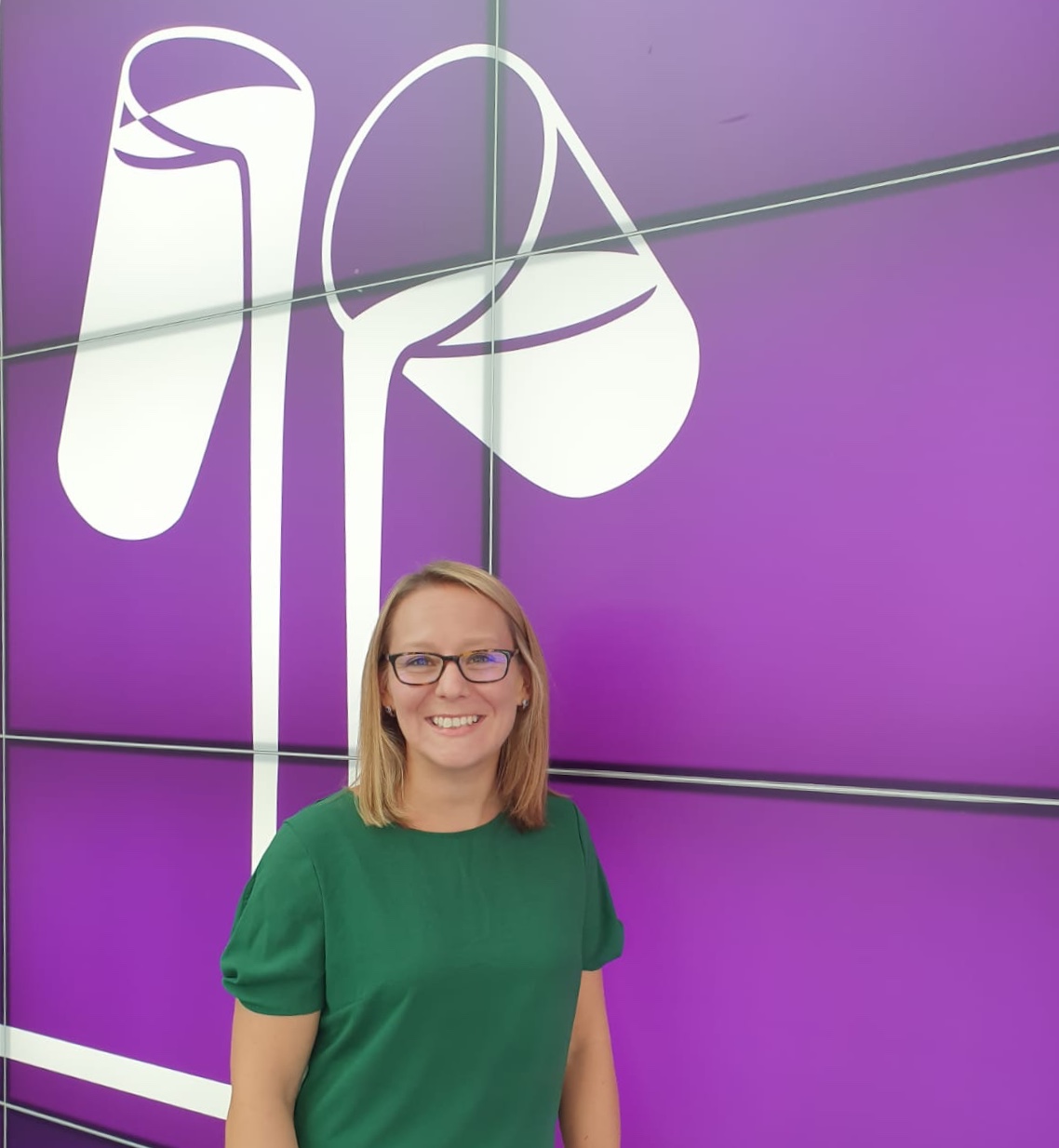
This blog post has been produced for the Greater Birmingham and Coventry and Warwickshire Chambers of Commerce as part of the 2021 Sustainable Business Series: Net Zero campaign.
The Sustainable Business Series: Net Zero is the Chamber’s first campaign on environmental sustainability, which aims to share best practice, guidance and knowledge to increase business progress to net zero. In 2021, this involves 5 free online webinars taking place from the end of September and throughout October along with publishing thought leadership podcasts, videos and blog content. The campaign will feature a Sustainability Summit on 3rd November
Thanks to our Headline Sponsors – Aston University, Arup, Morgan Sindall and the University of Birmingham - all webinars and the Summit are free to attend. Interested parties can find out more and register to attend Sustainable Business Series: Net Zero events here, and the Sustainable Business Summit here.
Mondelez International is proud to make much loved treats such as Cadbury, Maynards Bassetts, Belvita and Oreo. We recognise we have a responsibility to make our snacks sustainably and in the right way - and this is at the heart of our purpose – ‘Snacking Made Right’. We want to create a future where people and planet thrive, using less energy, water and waste, with ingredients consumers know and trust. Our approach to packaging is designed to support our broader sustainability goals, with our carbon emissions in mind. We’re constantly driving innovation for solutions and our ambition is zero net waste packaging, having already removing 65,000 tonnes of packaging globally by the end of 2020 as part of our wider 2025 sustainability commitments.
For the UK, our packaging strategy is simple – ‘Pack Light and Right’. This means optimising our packaging - reducing or removing it where we can without compromising performance. In the UK we’ve removed over 192 tonnes of packaging including:
- Removing all plastic trays and secondary packaging (1.1m pieces) from our Christmas adult selection boxes as of 2020
- Removing plastic windows from value and inclusion shell Easter Eggs (6.4m pieces) in 2021
- Removing 108 tonnes of cardboard in our Easter Egg cartons
- Using 15% less packaging across our large sharing bags, whilst keeping the same amount of treats inside – removing the equivalent of 20 football pitches worth of packaging
But how did we start on this journey and what would we share as best practise?
Cross functional collaboration is key. We created a Sustainability Steering Group across our Northern European business with key decision makers and influencers from RDQ, Procurement, Marketing, Sales, Corporate & Government Affairs and Sustainability to drive this agenda forwards.
We created a playbook to support our Marketing and RDQ community to identify sustainable packaging reduction opportunities in both new and existing products and provide them with the tools to support them. We undertook training sessions with Marketing and Product Change Management (PCM) teams on how to apply the playbook to inspire innovative ideas and to implement changes in support of our sustainable packaging goals.
Partnering with our customers has been mutually beneficial, supporting their own commitments to reduce their packaging, waste and environmental footprint. We have partnered with Co-Op, switching our cardboard display units to metal units, removing 252 tonnes of cardboard and outer packaging per year.
Partnerships with NGO’s like WRAP and becoming members of the UK Plastic Pact also really hold us to account, whilst proving a collaborative platform to drive activities at scale – like the Flexible Plastic Fund.
We also invite colleagues to share packaging reduction ideas through our colleague led sustainability network ‘GreenBite’. They are hugely passionate about our sustainability agenda - living and breathing our products every day. Many of our reduction activities have been born out of ideas from our colleagues.
Like most companies, we’re on a journey as we strive to make progress against our sustainability commitments. We’re incredibly proud of what we have accomplished but know there is much more to do. We will forge ahead in our distinctive way leading to better, lasting, and quicker results at scale.
Kelly’s experience at Mondelēz International spans over 20 years, beginning at the popular Birmingham based attraction Cadbury World. Following her work alongside cocoa farmers in Ghana, Kelly joined the community affairs team. She now leads The Cadbury Foundation, including the award-winning “Health for Life” programme which is celebrating its 10 year anniversary in 2021. Kelly represents Mondelēz International as one of the founding members of the recently-launched Flexible Plastic Fund, and was instrumental in the business signing up to the UK Plastic Pact. Kelly is also a sponsor of the internal ‘GreenBite’ colleague-led network focusing on all things sustainability. Having a positive impact on people and planet is something Kelly is incredibly passionate about in both her professional and personal life.
SBS21: Better Waste and Resource Management
Elizabeth Russell, Head of Relocation Services, Restore Harrow Green
This blog post has been produced for the Greater Birmingham and Coventry and Warwickshire Chambers of Commerce as part of the 2021 Sustainable Business Series: Net Zero campaign.
The Sustainable Business Series: Net Zero is the Chamber’s first campaign on environmental sustainability, which aims to share best practice, guidance and knowledge to increase business progress to net zero. In 2021, this involves 5 free online webinars taking place from the end of September and throughout October along with publishing thought leadership podcasts, videos and blog content. The campaign will feature a Sustainability Summit on 3rd November
Thanks to our Headline Sponsors – Aston University, Arup, Morgan Sindall and the University of Birmingham - all webinars and the Summit are free to attend. Interested parties can find out more and register to attend Sustainable Business Series: Net Zero events here, and the Sustainable Business Summit here.
Restore Harrow Green specialises in business relocation and removals service offering storage and IT relocation services, international moving, recycling and reuse. With today’s emphasis on climate change and the importance of protecting the planet Restore Harrow Green are supporting businesses recycling of all types of furniture, IT equipment and other items that a company may wish to change when they relocate or refurbish their offices and other premises.
The Benefits of Reuse and Recycling
More and more organisations, along with the public, are recognising the growing importance of recycling as a way of avoiding landfill and reducing our CO2 emissions. Landfills release greenhouse gases such as methane (25-28 times more potent than CO2) and leachate, which damages soil, water and ecological health. Additionally, waste to landfill is taxed and expected to continue to rise, so it’s in a company’s financial and environmental interest to reduce waste to landfill.
The other major benefit of recycling and reuse is that items get a second life and benefit schools, charities and those organisations that can make good use of furniture and IT equipment that might otherwise be thrown away and end up in landfill sites. With the realisation that the world’s resources are precious the importance of recycling and reuse is rising up the agenda of many companies and their customers.
Our Advice
Our advice to our anyone who approaches us is to try and maximise their waste and resources efficiency internally before looking to relocate products and use recycling services. This can be done by following the Waste Hierarchy, which is a management framework for waste. The top (1) is the most preferred option , and the bottom (5) the least preferred.
- Prevent
- Reduce
- Reuse
- Recycle
- Disposal
Using this hierarchy as a checklist for your waste and resources decisions across all areas of the business can be a powerful tool to maximise waste and resource efficiency. We recommend working with employees in your organisation to identify where waste and resource efficiency could be improved and then creating a waste and resource efficiency plan, based on the waste hierarchy.
As you continually manage and improve your plan, you may need support on recycling, reusing or relocating certain products, that’s where Restore Harrow Green can help.
Case Study
A great example of the positive impact we bring to our client can be seen through a recent project with the University of Northampton, where they relocated their entire campus to a new site. This meant relocating furniture, equipment, books, and other materials. In the process Restore advised on how best to handle the project from a sustainability point of view.
By recycling and selling on where possible and donating unwanted items to charities Restore were able to help the university handle the project in a really positive and cost-effective way.
The statistics are impressive:
- 2,233,02 metric tonnes of CO2 were diverted because of the Restore actions
- 59% of all furniture was diverted to reuse thus avoiding landfill and helping other organisations to make use of ‘second use’ items.
- A total of 12,733 items were diverted from landfill and either recycled or reused by other organisations
- The Total Fair Market value of the items gifted to charities was £438,045.19
Restore Harrow Green has 200,000 square feet of storage space and its dedicated and knowledgeable staff will tailor a solution to the customer’s needs. They move 250,000 people every year and recycle 3,000 tonnes of no longer needed assets every year. They focus on helping customers solve their relocation and recycling needs in a cost-effective way while ensuring that everything is done in a way that is positive for the environment and, wherever possible, helps charities and other organisations to benefit from second time around goods.
If you would like to find out more about how Restore Harrow Green can help your organisation with relocation, storage or recycling please contact:
Elizabeth Russell
Head of Relocation Services – Restore Harrow Green
T: 0121 326 0810
Gurdas Singh, Sales & Marketing Manager, OnLogistics

SBS21: Streamlining your logistics emissions
This blog post has been produced for the Greater Birmingham and Coventry and Warwickshire Chambers of Commerce as part of the 2021 Sustainable Business Series: Net Zero campaign.
The Sustainable Business Series: Net Zero is the Chamber’s first campaign on environmental sustainability, which aims to share best practice, guidance and knowledge to increase business progress to net zero. In 2021, this involves 5 free online webinars taking place from the end of September and throughout October along with publishing thought leadership podcasts, videos and blog content. The campaign will feature a Sustainability Summit on 3rd November
Thanks to our Headline Sponsors – Aston University, Arup, Morgan Sindall and the University of Birmingham - all webinars and the Summit are free to attend. Interested parties can find out more and register to attend Sustainable Business Series: Net Zero events here, and the Sustainable Business Summit here.
Businesses of all sizes around the UK are constantly reminded of their responsibility to cut carbon emissions and protect the planet. It’s important to remember that no matter the size of your business or the nature of industry your commitment to reducing carbon could make a real difference – to the planet, to your customers and to your running costs.
Now although achieving carbon neutrality via supply chains is hard at the moment, monitoring and managing supply chain carbon emissions is something that can still be achieved – to reduce we must be able to record, initially.
Below are a few practical tips businesses can implement to help monitor, manage and reduce their emissions in order to progress to net zero:
Record and Monitor
To commit to tackling carbon emissions, a good place to start is to actively monitor where and the amount of carbon your business currently emits. Although all processes emit carbon to varying degrees, I have detailed some examples of processes below
some may not apply directly to your business but on average these stats represent a majority of small to medium businesses.
Review Processes
Operational cost savings, greater resilience and an improved reputation amongst your customer base and supply chain are some benefits to be found from net zero businesses. With operational functions defined by processes, it might be useful to analyse processes with methods and equipment to define emissions in relation to the supply chain for example:
Dispatching orders: businesses may feel priced out of electrical vehicle options, however reviewing consignment could be another progression to neutrality. It is estimated that sending 500 2kg parcels a year could contribute to 1 tonne of emitted carbon a year – aggregating consignments could be another process to implement.
Other Practical Tips
The changes for other businesses may not be applicable to yours, however committing to change can come in many ways, here are some more tips to manage and reduce your carbon emissions:
Monthly mileage reports on completed consignments
Look to utilise ‘Groupage & Back Loads’ more often
Implementation of re-usable packaging or more efficient packaging
Conducting an in-depth analysis of logistics plans, with help of partners and participation from customers, you can reduce transport needs
Reducing carbon emissions for a business that transports goods seems a daunting task, however here are some useful pieces of information that can be adopted to aid in becoming net zero.
Look to other modes of transport when fulfilling deliveries. For every kilometre travelled carrying 1 tonne of goods a boat emits 3 grams of CO2, a train emits 18 grams, a truck emits 47 grams, and a plane emits 560 grams. Switching to boats or trains can significantly reduce your carbon footprint.
Allocating vehicles with more sustainable fuel sources than diesel such as LNG (liquid natural gas) or hydrogen will also reduce your carbon footprint. Implementing LNG comes with other benefits such as reducing running costs as the fuel is 10-25% cheaper than diesel.
Train drivers could reduce a good portion of CO2 emissions, through simple tasks like switching the engine off when still, rolling windows up at high speeds to reduce drag which consumes extra fuel, and drive off immediately after starting the engine.
To further limit transport CO2 emissions take a look at the businesses logistics chain and see about optimising it for reduced shipment sizes. Route planning, stricter vehicle filling, and resource pooling can aid this.
Conduct an in-depth analysis of logistics plans with the help of partners and participation from customers, transport routes can be streamlined along with emission.
OnLogistics has changed processes to reduce carbon emission through more efficient packaging in 2020. These include reducing the amount of packaging used to save space, reduce weight and minimise carbon to create more efficient logistics operation. To read more about how and why we embarked on making packaging more efficient visit: Case Study – The Impacts of Efficient Packaging - OnLogistics.
Aligning Infrastructure to Net Zero

The 6th Carbon Budget, enshrined in UK law earlier this year, was the first carbon budget aligned to our national net zero target. A key part of reaching net zero is the decarbonisation of transport, currently responsible for over quarter of the country’s carbon emissions. Key themes for the decarbonisation of transport are encouraging a modal shift from private vehicles to public transport, and developing active travel networks to support safe cycling and walking. Doing these things will reduce the operational carbon emissions associated with travel by reducing in tailpipe emissions. However, it is crucial that we do not only consider emissions from road users but also the embodied carbon associated with the construction and development of the new infrastructure to support these activities.
The Infrastructure Carbon Review (ICR) (2013) and PAS 2080:2016 – Carbon Management in Infrastructure – set out a process to reduce carbon in a manner that also reduces cost. This means carbon reduction should be considered through design, procurement and delivery. The practical application of this means we can increase efficiency and limit our environmental impact. Prior to our national 2050 net zero target, it would have been great to demonstrate a project which reduced cost and carbon emissions by 20 or 30%. However, thinking about percentage reductions is no longer enough and we must look at how we can minimise carbon as close to zero as possible. An important question then becomes can we achieve near zero emissions following the ‘reduce carbon, reduce cost’ mantra from the ICR?
The ‘carbon cost tipping point’ is the point at which there are opportunities to reduce carbon further but with an expected increase in cost. As an example, this tipping point may be reached by the use of low-carbon materials which are more expensive than their traditional counterparts but would reduce carbon emissions further. If we are serious about net zero then we must consider these alternatives on our schemes and projects.
Carbon cost management[1] is the process where carbon reduction opportunities are costed to ensure the most efficient options are pursued. Understanding where the tipping point occurs on a project, and the cost difference between low-carbon solutions versus traditional methods is vitally important. This will become more important still when potential carbon taxes are introduced or the need to pay for offsetting emissions associated with the development of schemes.
The key challenges for business are:
- To understand where the tipping point occurs in your activities. What are the extra costs associated with low-carbon alternatives and the business case for going beyond the tipping point.
- Understanding and accounting for whole life carbon emissions from schemes or projects and taking all steps possible to reduce carbon emission as close to zero as possible.
With time, the carbon cost tipping point will disappear as low-carbon solutions become cheaper than traditional alternatives. However, until then, we must incorporate carbon cost management into decision making to effectively develop net zero projects.
Dr David Jackson – Carbon Team Lead, Sweco UK
David has a background in Weather Forecasting and climate science with the Met Office and saw first hand the impact climate change was having on our lives. Following a MSc in Carbon Management, David completed a PhD researching carbon management in infrastructure. This has led to opportunities to work with Costain and more recently Sweco, working with clients to set and achieve challenging carbon reduction targets.
[1] More information on Carbon Cost Management: https://www.swecourbaninsight.com/wp-content/uploads/2020/10/urban-insight-report_carbon-cost-in-infrastructure.pdf
SBS21: What is carbon offsetting and how can it be used for your business?
Amanda Bourne, Founder, Tree-V
This blog post has been produced for the Greater Birmingham and Coventry and Warwickshire Chambers of Commerce as part of the 2021 Sustainable Business Series: Net Zero campaign.
The Sustainable Business Series: Net Zero is the Chamber’s first campaign on environmental sustainability, which aims to share best practice, guidance and knowledge to increase business progress to net zero. In 2021, this involves 5 free online webinars taking place from the end of September and throughout October along with publishing thought leadership podcasts, videos and blog content. The campaign will feature a Sustainability Summit on 3rd November
Thanks to our Headline Sponsors – Aston University, Arup, Morgan Sindall and the University of Birmingham - all webinars and the Summit are free to attend. Interested parties can find out more about eh Sustainable Business Series: Net Zero here.
We hate to be those people and put our teacher’s pet hat on straight away but carbon offsetting is only half the story and is part of something called Carbon Balancing. Balancing includes offsetting and carbon capture and is a key part of the UK Government’s plan to achieve their green targets.
WHAT’S THE DIFFERENCE?

Carbon capture supports the planting of new woodland. Over the lifetime of the newly planted tree it will absorb the carbon your business is producing.
Carbon offsetting supports established forestry projects and offsets today’s emissions from the get-go.
HOW CARBON BALANCING WORKS
The beauty of carbon offsetting and capturing is how simple the science is. We know humans like to breathe oxygen and plants are partial to a bit of carbon dioxide. Well, the more trees we have, the more carbon dioxide is ‘breathed’ (called sequestering) in and taken out of the atmosphere. This means that all those carbon dioxide particles your business has produced are no longer floating around the atmosphere. As long as the trees that have done that balancing are never burned down then it will be locked in forever!
HOW DOES CARBON OFFSETTING HELP MY BUSINESS?
In 2019, 47% of internet users* had stopped using products that did not share their personal values, and the biggest quoted value was the environment. Carbon offsetting or capturing your business is an easy way to show your company’s green values. Aside from doing some good, the PR benefits are huge, giving your company a sustainable edge over your competitors.
WHAT CAN I CARBON OFFSET?
In theory any product or service your business consumes can be replaced by green alternatives or be carbon balanced. For example you could switch to an eco-friendly energy supplier or purchase some electric vehicles but here at Tree-V we know for some of our customers embracing these alternatives isn’t feasible right now.
But carbon offsetting or capturing is always an achievable and affordable alternative. With a calculator and a bit of help from a carbon balancing company you’ll be able to work out your carbon footprints and balance anything.
WHAT NEXT?
There are a variety of companies that can help and you need to find the right company for you. Some will help you with every element of your business life and others will help with a particular niche but provide more accurate analysis and targeted support. For example, here at Tree-V we specialise in carbon balancing automotive emissions and help customers market that to their customers. We know that vehicle emissions aren’t the only element of a company’s carbon footprint but they are one of the most obvious, one of the most easily tackled and, once balanced, a step that will leave the biggest impression on your customers.
Whatever you end up doing, it is better than doing nothing! Carbon offsetting is the perfect sticking plaster to prevent any further damage whilst we transition to clean energy. It’s a quick win for you, your customers and the planet.
Find out more on how to carbon balance your company’s mileage at www.tree-v.com/commercial/commercial-enquiries/
Tree-V & Amanda
At Tree-V we focus on carbon offsetting for all vehicles. Our mission is to help those unable to convert their vehicles to electric, from business owners to classic car enthusiasts still keep their miles green and environmentally friendly! Our ambition is to, one day, make sure that the pollution from every mile powered by fossil fuels is cancelled out by the planting of beautiful new woodlands, throughout the UK and abroad. I am a car enthusiast and grew up very near Coventry where my Dad worked as an Engineer in the Coventry car factories.
*https://www.emarketer.com/chart/228374/internet-users-worldwide-who-have-switched-productservice-company-violated-their-personal-values-jan-2019-of-respondents
SBS21: Questioning your current practices for environmental progress
Suzanna Jones, Sustainability Officer, South City and Colleges Birmingham

This blog post has been produced for the Greater Birmingham and Coventry and Warwickshire Chambers of Commerce as part of the 2021 Sustainable Business Series: Net Zero campaign.
The Sustainable Business Series: Net Zero is the Chamber’s first campaign on environmental sustainability, which aims to share best practice, guidance and knowledge to increase business progress to net zero. In 2021, this involves 5 free online webinars taking place from the end of September and throughout October along with publishing thought leadership podcasts, videos and blog content. The campaign will feature a Sustainability Summit on 3rd November
Thanks to our Headline Sponsors – Aston University, Arup, Morgan Sindall and the University of Birmingham - all webinars and the Summit are free to attend. Interested parties can find out more about eh Sustainable Business Series: Net Zero here.
There is a great scope for SME’s to support our national and global effort to reduce our carbon footprint and slow down climate change. Small businesses are the backbone of our economy and by implementing some simple changes can ensure their business is fit for the future.
The following section gives a set of quick questions to ask yourself and your business in order to prompt reflective thinking over your current practices.
- Energy Efficiency and Reducing emissions
Questions to ask yourself:
- Do we avoid using unnecessary amounts of energy?
- Do we remind employees to turn lights, and equipment off?
- Are equipment switched completely off over the weekends and holiday periods?
- Do we monitor meter readings?
Benefits:
Most businesses can achieve meaningful cost savings through reducing their energy consumption. Even low and no-cost actions can usually reduce energy costs by at least 10% and produce quick returns, enhancing profitability.
By switching computers off at nights and weekends, rather than leaving them running, their energy consumption can be reduced by 75% per year. Equipment lifespan will also be extended and maintenance costs and risk of breakdown should be reduced.
- Greenhouse Gas Emissions Reduction
Questions to ask yourself:
- Have we looked at the Carbon Trust’s advice for cutting emissions and costs for small businesses?
- Have we replaced lights with LEDs?
- Do we have opening up and closing down procedures to turn off equipment?
- Do we turn off technology on standby?
Top tip:
- Check out the Carbon Trusts guidance. They have the following guide books: Better Business Guide, Effective Energy Management, Energy Procurement and Green Tariffs, Green Events Guide, Heating Ventilation and Air Conditioning and Guidance for Office Based Companies.
- Sustainable Transport
Questions to ask yourself:
- Are we encouraging staff to take sustainable transport?
- Do we incentivise lift-shares? Or cycling to work?
- Sourcing and procurement
Sourcing our needs for food or other items from ethical and local sources is really important. Local produce helps the local economy and also reduces transportation time, in turn reducing emissions associated with driving long distances.
Questions to ask yourself:
- Where are we getting our products from? Are they from local sources? Are they ethically and sustainably produced?
- Monitor heating
Heating typically accounts for between 20-40% of the energy used in non-domestic buildings. Heating should be considered a key target area when considering energy saving measures, due to the availability and ease of efficient options.
Overheating can occur in areas that do not need to be heated such as corridors and storage areas, as well as overheating occupied areas. We can prevent heat loss through improving insulation and draught control.
- Does heating come on only when needed?
- Do we encourage employees to dress appropriately for season and minimise use of electric heaters?
- Seek sustainability advice through the Business Elevator Project
Want more support? South and City College Birmingham have partnered with Solihull College and BMet to support small to medium sized local employers and micro businesses through an ESF funded project – The Business Elevator. Through this service SME’s can access:
- Training services
- Apprenticeship and recruitment services
- Business mentoring
- Networking opportunities
- Work experience or placements
- Other support services
Additionally our Sustainability Officers can offer advice and consultation on sustainability challenges and give best-practice advice.
For further information about the Business Elevator Project, please contact Tonia on 07557 014 314 or [email protected]
NEW: This report collates the research findings from the 2021 Sustainable Business Series to provide an overview of businesses response to environmental sustainability and net zero.
Click here to view
Our ‘Net Zero and the Business Community’ briefing paper details why net zero is important for businesses, the economic and commercial opportunities it presents, and legal and compliance obligations. It also highlights what businesses can start to do to prepare for the transition.
Click here to view
Coventry & Warwickshire Green Business Programme
The Coventry and Warwickshire Green Business Programme supports businesses with fewer than 250 employees based in Coventry and Warwickshire who want to save money on energy, waste and water bills and maximise low carbon opportunities.
https://www.coventry.gov.uk/greenbusinessprogramme
West Midlands Net Zero Business Pledge
A regional initiative covering any organisation across the 18 local authority areas of the WMCA. Sustainability West Midlands are administering the pledge and supporting organisations progress towards their pledge.
https://www.wmca.org.uk/what-we-do/environment-and-energy/west-midlands-net-zero-business-pledge/
SME Climate Hub
A national initiative with a specific focus on SMEs. The hub provides various tools, resources and support to manage your businesses transition to net zero.
https://businessclimatehub.org/uk/
Zero Carbon Business
A partnership between business organisations, energy networks and professional bodies to give small businesses the advice they need to reduce their carbon emissions.




